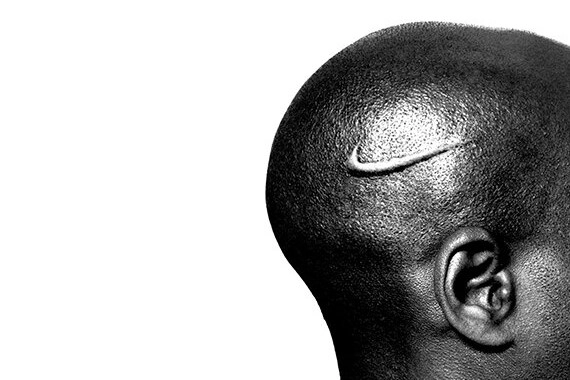Through fragments of the world of sports, such as Diego Maradona's hand or parts of football jerseys, the artist Hank Willis Thomas accentuates societal issues, which may represent perfectly hidden catastrophes.
Thomas's work is a political statement. It critiques commercialization, modern-day slavery, or identity theft; topics that are easily overshadowed by the mechanisms of power and the resulting violence and discrimination. The artist himself is African American, and his works incorporate both family and personal history as well as the broader context of American society.

In the photographic series "Branded" (2003), for example, Thomas depicts African American men with phrases like "Black Power" on their teeth or with company logos on their bodies, thus pointing out the exploitation of black men simply for the promotion of a particular product. In one of the photographs, a black body is depicted with the Nike logo seemingly branded and raised on the skin. In the form of a brand, it refers to the earlier labeling of slaves by their owners. The issue of advertising in connection with the sports industry is characteristic of Thomas's work, and the use of the chronically known "swoosh" is one example where the artist, with a single image, highlights a series of social problems.
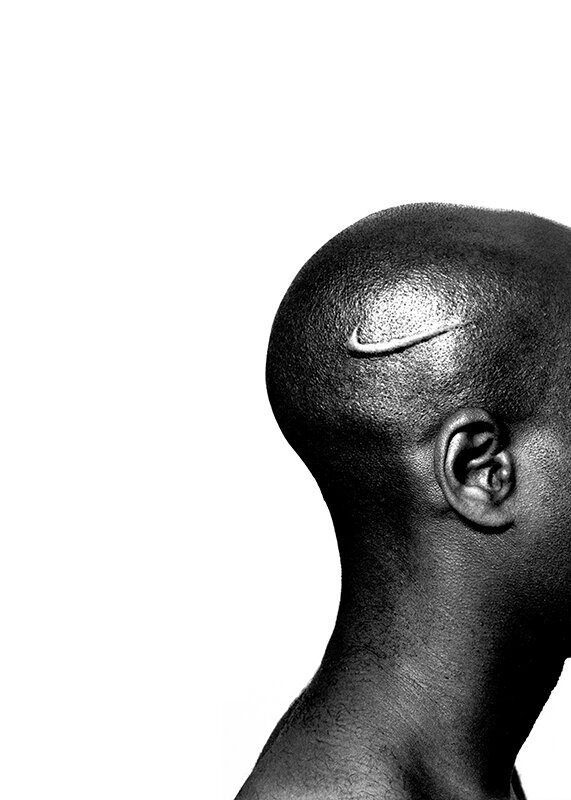
Commodification also applies to football players, often recruited by illegal or unethical agencies that transport them from poor or unstable countries to wealthier "markets." These players become dependent on them and fall into various traps of fraud, manipulation, or signing disadvantageous contracts, effectively isolating them from their homes, where their return or continuation of education is made impossible. In short, such human trafficking, successfully concealed under the guise of the glamorous world of football, is exposed by Thomas in the photograph "The Cotton Bowl" (2011), symmetrically divided into two parts. On the left, we see a worker picking cotton on a plantation, while on the right, a football player on the green of the playing field. The parallel between modern slavery in the textile industry and the athlete who loses his rights through contracts with various entities and becomes a mere unfree pawn is strongly emphasized in the photograph.
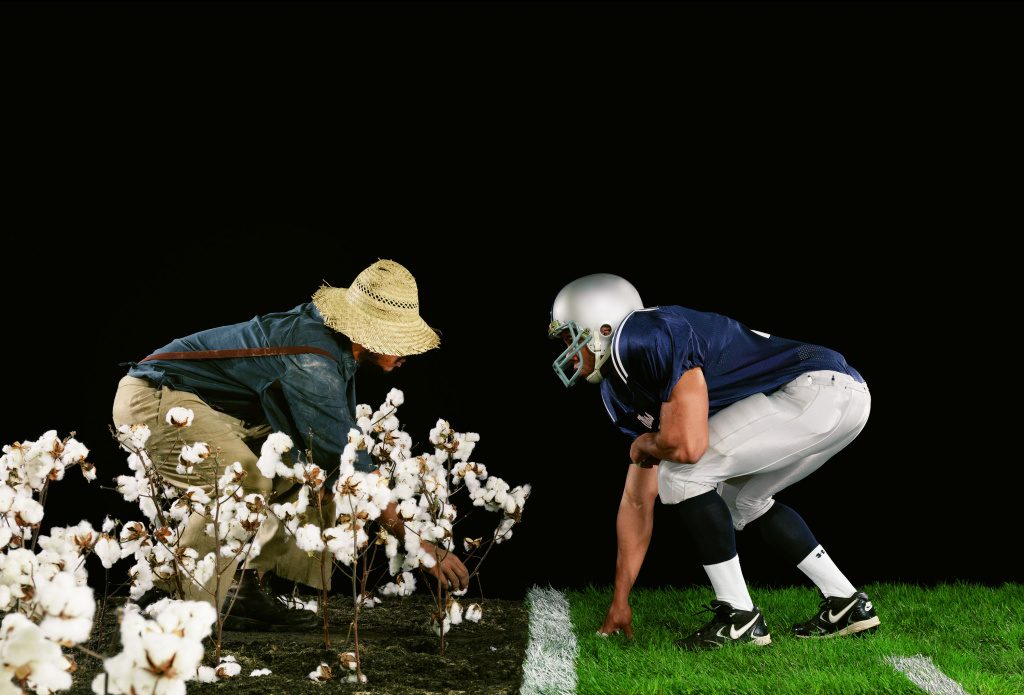
The artist describes creating with a focus on the focal points of his attention, visual motifs, slices of reality, flashes that continually recur. He speaks of Barthes' punctum, compulsive visual points, peculiarly inexplicably irritating to observers, which are purely personal, detached from any cultural code. Thomas observes these and translates them into sculpture. One of these could be the record of Maradona's touch of the ball during the match with England in the 1986 World Cup, known as the "Hand of God," which resulted in a goal and Argentina's subsequent 2-1 victory, even though the scoring was not in accordance with the rules. Maradona later commented on the act as "symbolic revenge" for the United Kingdom's victory over Argentina in the Falklands War.
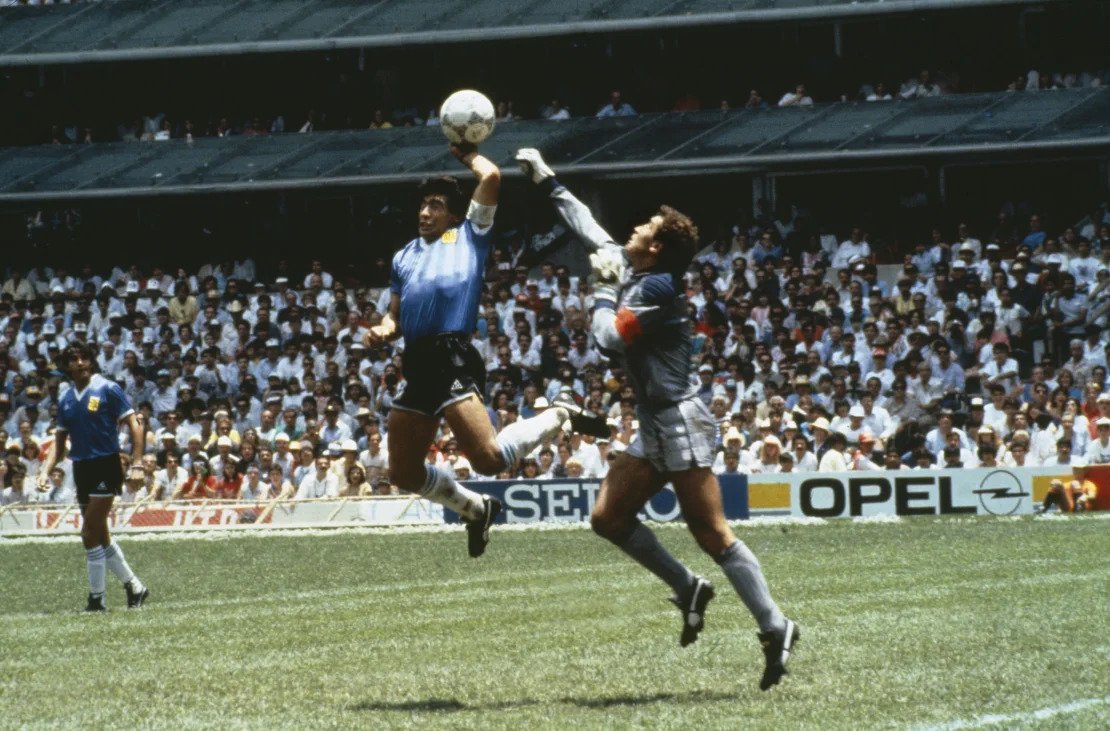
The laminated sculpture "Hand of God" (2017), with its color-changing metallic surface, serves as a reminder of an event that is once again a culmination of political and broadly societal context. Thomas thus borrows a historical moment, focusing on its appearance but in this case also on its connotations that persist in cultural memory, and erects a monument to it. However, it's not a monument that merely celebrates the past but one that reveals it as an impulse for reflecting on the present.

As evident, the author extensively employs citations. They become a means for him to express a current and pressing message responding to a long historical development that has led to the state of today.
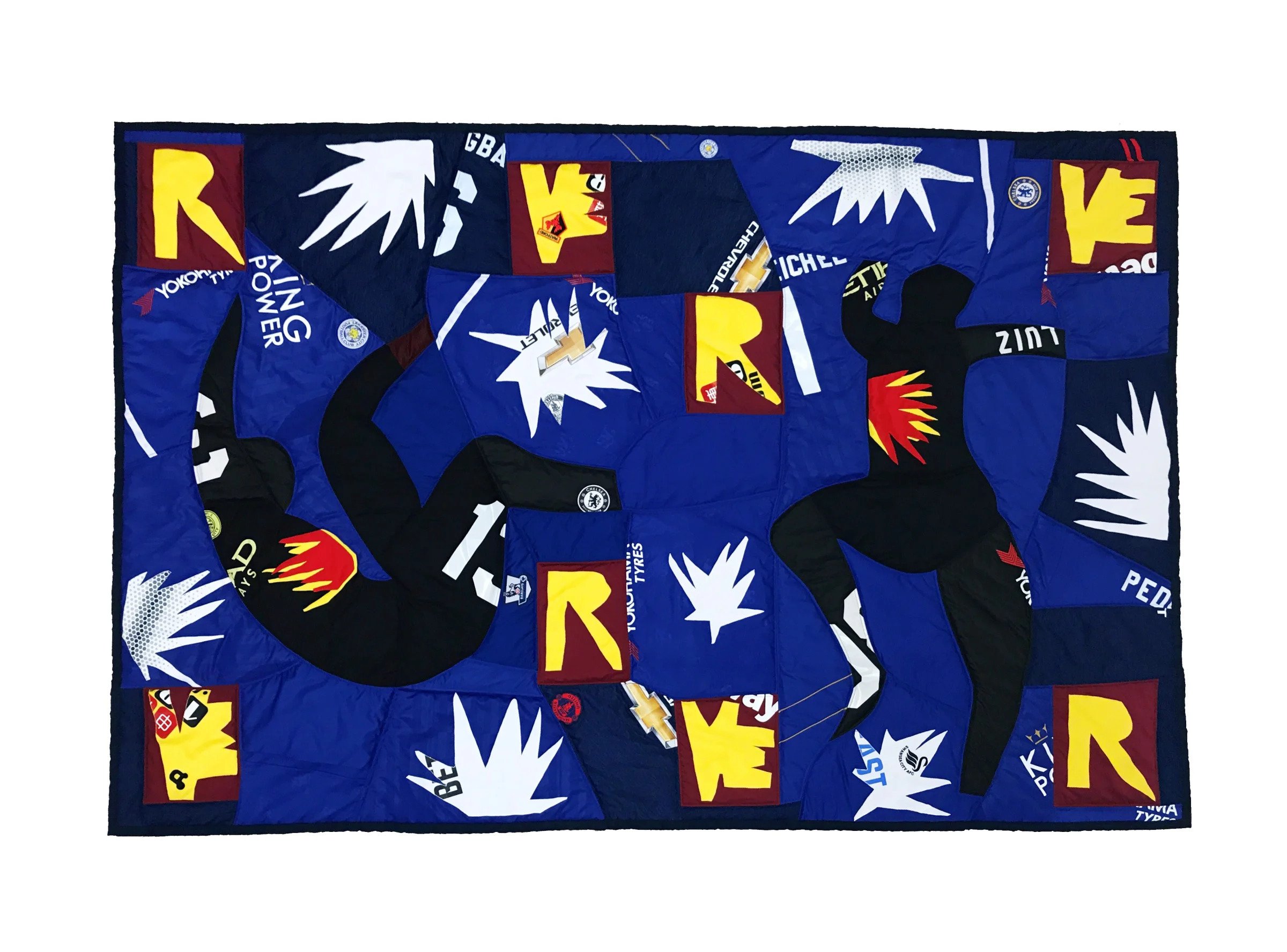
In the tapestry "Verve" (2017), figures abstractly emerge in a composition similar to Matisse's dancers ("Dance," 1910). By mimicking the famous motif, Thomas highlights the problematic background of significant European painters. Matisse, like Picasso, whose legacy Thomas also engages within other works, was inspired by the art and culture of other nations and regions that had been subjected to European colonialism. The cited painting, alongside others, drew from forms and colors primarily of African and Islamic art. In Europe, these elements were perceived as revolutionary, earning Matisse the status of a pioneer of a new style.
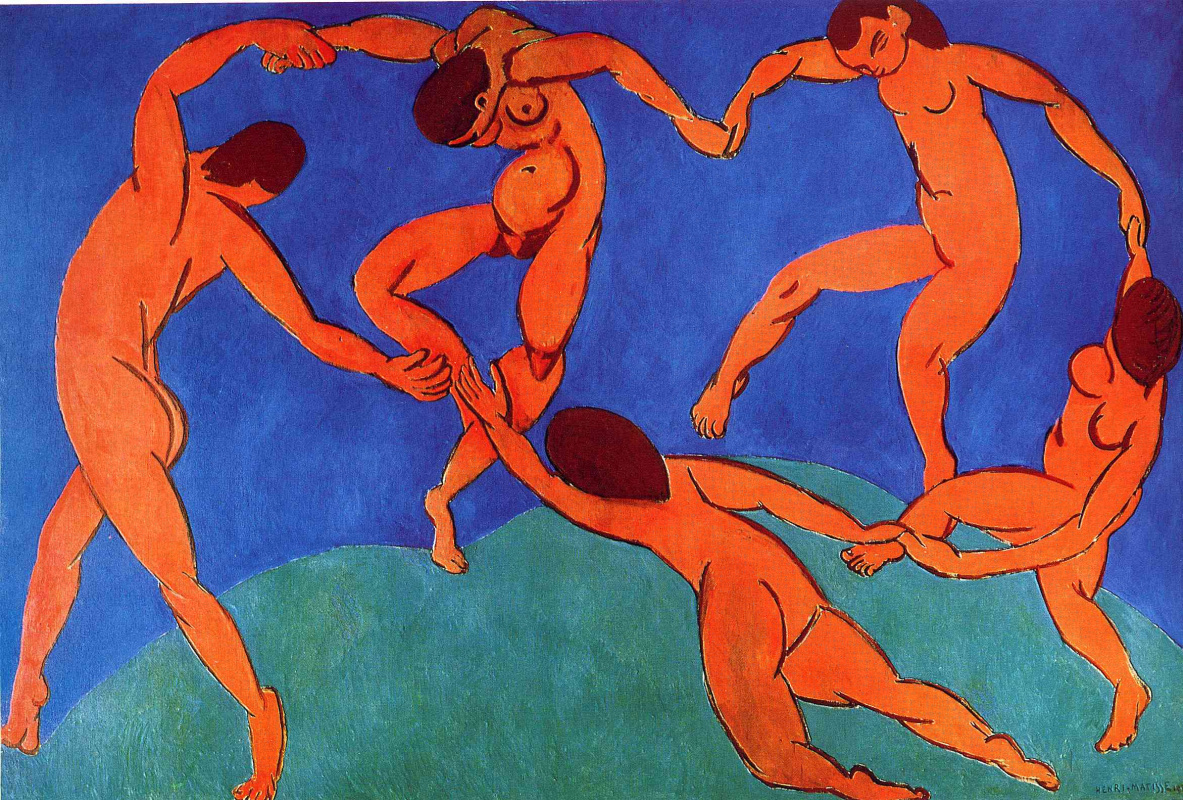
Thomas's criticism does not resonate self-sufficiently, nor does it remain at the level of specific cases of cultural appropriation by Western painters. The scene, combined with other ideological levels of the object, rather highlights the general problem of colonization and the superiority of one world over another, its hypocrisy, and injustice.
The textile collage is partly composed of football jerseys - in this aspect, too, the undignified working conditions and devastating ecological impacts concentrated in the textile trade are heard. From fabric as a seemingly innocuous object, Thomas establishes a symbol of oppression that is uncompromisingly linked to the circumstances of mass garment production. Even in this subject, the theme of colonization, which is part of today's global world, is still present; people in Western societies buy much more than they need, while on the other hand, someone pays for it with their health and sometimes even their lives when they cannot support themselves and their families on a minimum wage, not to mention the ecological impacts of soil or forest destruction, commodity exports, and so on.
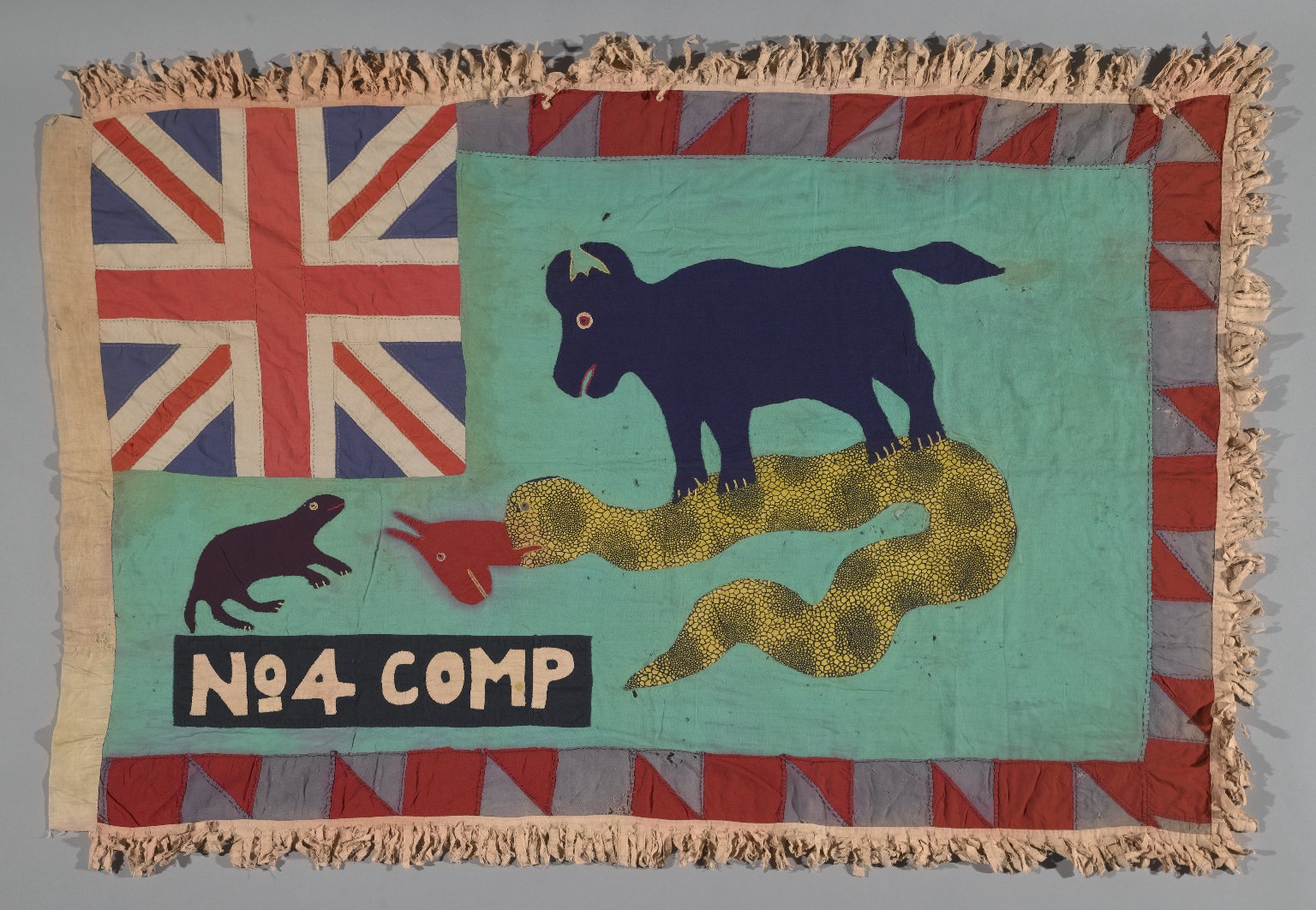
Even on this level, Verve does not exhaust itself but rather reflects another phenomenon - the Asafo flags, from which it borrows its style. These are canvases that belong to the cultural heritage of the Ghanaian ethnic group Fante, which continues to be developed today. It is noteworthy how their motifs address issues of colonization. In the past, the Asafo flags included the British Union Jack as evidence of loyalty to the British, upon whom the Asafo community depended, among other things, for protection against hostile tribes. Overall, the concept of the flags stems from European influence, which began in the 16th century when European trading companies established forts along the Ghanaian coast. The way political conditions are reflected in the visual identity of Asafo flags is demonstrated by the replacement of the British symbol with the Ghanaian one after Ghana gained independence in 1957.
.jpg)
On the darker sides of sports and art, Thomas shows that sports corporations and the mechanisms of games, championships, matches, or Olympics are rather a reflection of the functioning of the contemporary world. These mentioned spheres are just some of those where exploitative practices enabled by today's society have been adopted. The oppression of one group by another has certainly been present in past centuries, but today it is sanctioned by the main driver of the present - capitalism.
Capitalist growth is also evident in the work "Endless Column III" (2017). Identical balls forming a column, whose continuation the observer can easily imagine, evoke thoughts of mass production that has no end, trapped within itself because it cannot escape the often self-serving consumer cycle. As a result, not only disadvantaged members of a certain race or class are manipulated, but also advertising consumers; in fact, all inhabitants of Western society fall into this category. From the artwork, one can naturally deduce the cycle of the aforementioned slave labor in sports and other areas.
.jpg)
The author depicts the significant interconnection of individual questions arising from the configuration of the contemporary world, with roots deeply embedded in the past. Therefore, his work never comes across as banal. As a whole, it has a solid ideological foundation, which Thomas allows to unfold in each object by emphasizing diverse visual representations, symbols, and seemingly straightforward motifs. Often, it is surprising how deeply one can delve into a single photograph or sculpture.
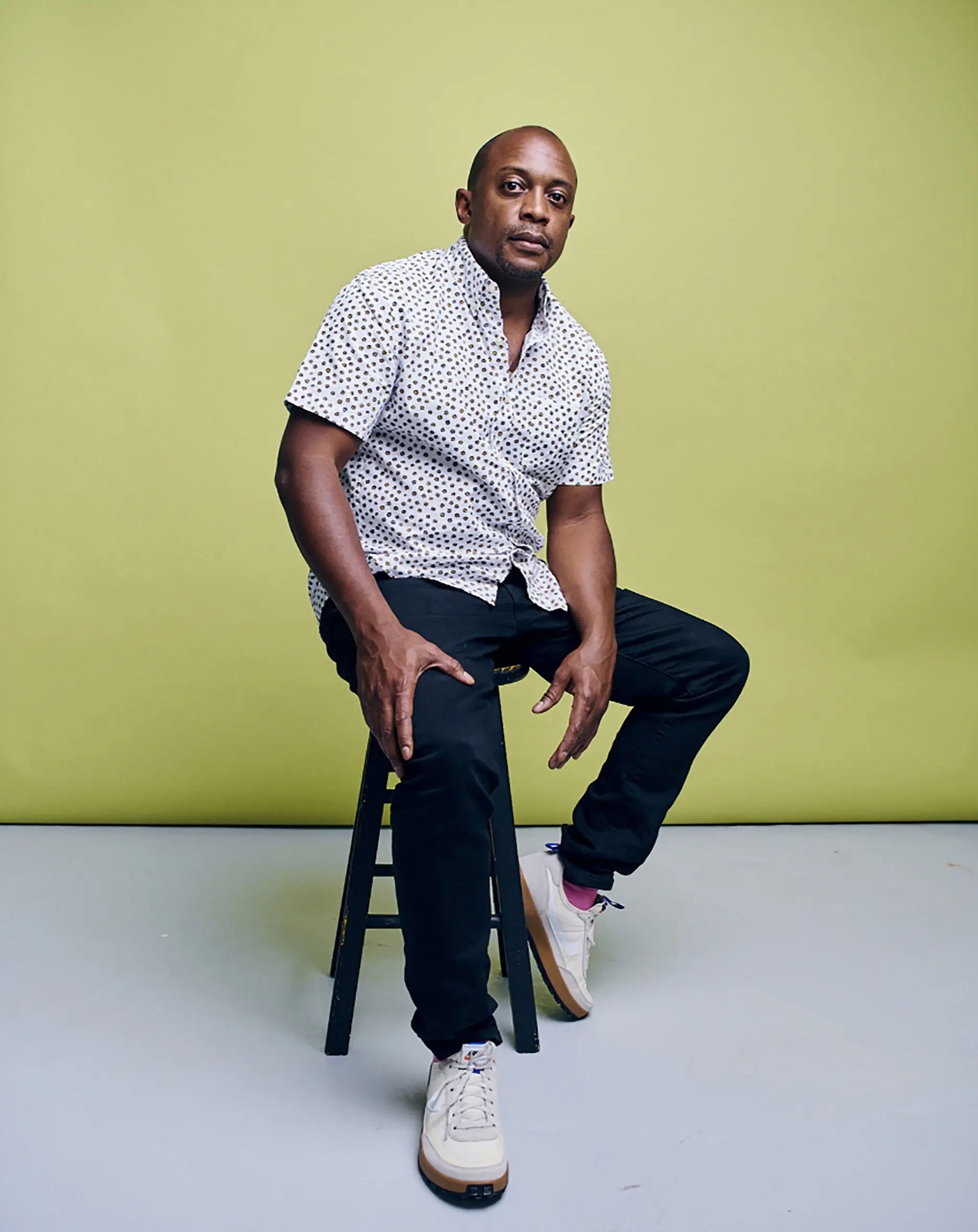
Hank Willis Thomas is a contemporary American artist who explores racial identity, advertising culture, colonization, and social inequalities. He collaborates on projects such as For Freedoms and Question Bridge: Black Males, which address political and social issues within the black community. Thomas was born in 1976 in New Jersey. He studied photography and African studies at New York University and California College of the Arts. His works have been exhibited in many prestigious institutions, including the International Center of Photography and the Guggenheim Museum Bilbao.
